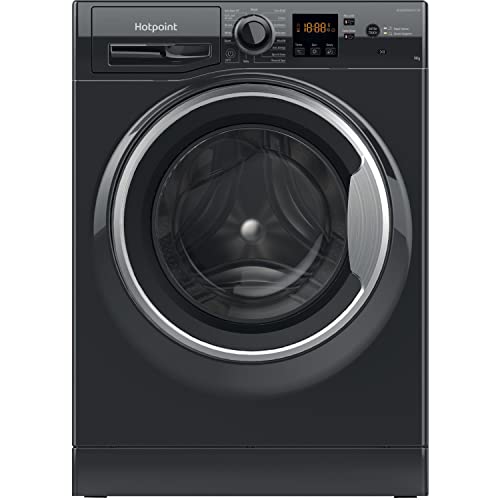7 Tips About Washer Dryer Combos That Nobody Will Share With You

Washer Dryer Combos
Washer dryer combos bring the convenience of a clothes dryer together into one appliance. They do the same laundry as standalone appliances, but with a smaller footprint.
These units are great for small homes and apartments. The dryer's smaller capacity is ideal for one or two-person households, and they save homeowners time and effort by eliminating the need to transfer wet laundry from the washer to the dryer.
Saves Space
Washer dryer combos integrate two appliances into one, saving space in your laundry room. They are also ideal for smaller living spaces that are limited in space. best tumble dryers are gentler on clothes than front-loading machines and can be more energy-efficient than separate washers. Most combos of washer and dryers have different options to meet specific needs in the care of your clothes, including delicates, high-efficiency and scheduled drying.
They're perfect for condominiums or apartments, as well as other smaller houses, as they are able to fit in small laundry rooms or utility closets. These units can be installed wherever there is electricity and water. Certain all-in-one washers can even be configured to be portable which allows you to carry them with you when moving or relocating.
They're smaller than separate dryers and washers. Based on the brand and model, they're typically about the size of dishwashers, meaning they can be hidden away in a corner or under the counter. Some models are vented and others are not and can be placed in any space that doesn't have a vent.
Combinations of dryer and washer can help you save time and effort. You can save time and energy by not having to transfer your laundry between the washer and dryer. This is especially beneficial if you have mobility issues or work for long hours and don't get home until late at night.
While people used to think that washer dryers required a long time to dry, modern washer dryers have blowed that misconception out of the water with quick drying times. Most are ready to use within 45 minutes or less, making them an excellent option for busy families. They are also ideal for those who live on tank water and care about the environment, since they don't require the extra water and energy that dryers and washing machines require to operate.
Time to save
Washer dryer combos can be an ideal solution for those who live in tiny apartments, condos or homes, or simply don't have the space to accommodate two large appliances. They combine a front-load washer and a clothes dryer into one unit that is roughly half the size of a standard washer and dryer. They are smaller than standalone appliances, but they still deliver comparable drying and washing results.
They are also designed to be energy and water-efficient. This reduces utility bills and helps to promote sustainability in the environment. Some units have features like sensor drying, which can automatically adjust the cycle settings depending on fabric type and soil levels. This can help optimize the energy consumption.
Additionally, washer dryer combos are easy to use. The washer dryer combos are simple to use and set up due to their easy controls and user-friendly design. Many models come with a timer that is set to start the cycle at a predetermined time, allowing you to wash and dry your clothes on a time that fits your needs. You can set your washer to start prior to leaving to work in the morning, so you'll be able to arrive home to clean and dried clothes.
Another advantage of washer dryer combos is that they do not require venting outside like traditional standalone appliances. This allows the appliance be installed in a variety of locations even in small spaces such as an under-counter or closet counter. It's also cheaper than installing the vented drying system inside your home.
One disadvantage of washer dryer combos is that they can take longer than standalone appliances to complete the cycle. A typical cycle may take between three and six hours. This is a long amount of time to complete an entire load. This could be a problem if you have a busy schedule or reside in a cold climate and are unable to dry your clothes.
Another issue is that dryers and washers tend to use a lot of water during the drying phase. This can be problematic if you are on tank water, or are concerned about the amount of water you use and environmental impact.
Saves Energy
A washer-dryer combination is an all-in-one laundry appliance that incorporates the functions of a front load washing machine and dryer for clothes into a single unit. They promise to do everything that standalone appliances are able to do, but with a smaller footprint, which is a huge benefit for homes with smaller spaces.
There are many washer dryers are designed to be as energy efficient as is possible and the majority of them have features such as sensor drying, which detects levels of moisture and adjusts drying time in accordance with the level of moisture. This will help you save money, energy and reduce the impact on the environment.
The best method to assess how an individual combination dryer is performing when it comes to energy usage is to look at the ENERGY STAR rating on its Energy Factor label. You can also use this to examine its performance in comparison to other similar products on the market and ensure that it's suitable for your home, based on its consumption of electricity and water.
The washer component of a combination washer-dryer operates exactly like a front load washer. However, the drying function is quite fascinating. The majority of dryers on the market are condenser-style dryers that means they don't use any heat to dry the process - instead they cool down the lint collected inside the tumbler by transferring it across a series of fins, much like an air conditioner.
This can take as long as 6.5 hours for some models and requires a significant amount of electricity. Therefore, washer dryer combos are typically a bit more expensive to run than separate appliances.

It's important to note that a high-quality combo will cost the same as the equivalent washer or dryer. However, you are purchasing and using two appliances in one. This could increase the price and complexity of the appliance and make it less reliable if something goes wrong. The added complexity also adds to your repair costs if the appliance needs to be replaced, which can be an issue when you're on a tight budget.
Savings on Money
Combination washer and dryers are an ideal option for homes with limited space, since they combine a washer and dryer into one unit. They're also an excellent choice for those who wish to avoid frequent trips to the laundromat. They're inexpensive, easy to use and provide the highest quality of service at a reasonable price.
Since both a washer and dryer are part of the same machine, they consume less energy than two separate appliances. This is especially true for vented dryers and washers that feature an air-cooled heat exchanger that reduces energy consumption. In fact, most washer dryer combos are more efficient than standalone models, and a lot of them can save families around $100 a year on laundry utilities [source: Consumer Reports].
Another way that washer dryer combo units can save money is not requiring you to switch machines between washes and dry cycles. A combination washer dryer will start drying your clothes automatically as soon as the wash cycle is completed. This helps to avoid the musty mildew smell that can form if wet laundry is left in the dryer for too long. Some models even allow you to delay the dryer cycle, so that you can load the dryer/washer early in the morning, and come home to a fully-dry load of laundry.
There are a few disadvantages of using a combination dryer/washer. The most significant drawback is that these machines are smaller than standalone washing machines. This means that you won't be able to do as much laundry in one cycle as you can with a conventional machine. Some combo washers and dryers tend to take longer to dry a load than standalone dryers.
Modern washer/dryer combo units have been designed to solve these problems. Ventless dryers come with an air-cooled heat exchanger, while those with ventless models use a water-based system that works just like the radiator in your car. Both systems can reduce the time required to dry a load.
